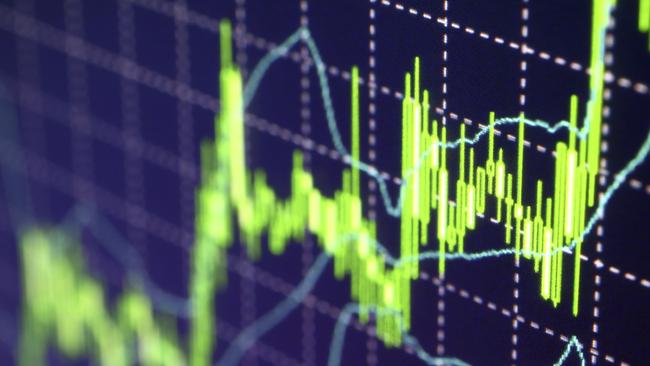Relief rather than revelry as sharemarket nears pre-GFC high
As Maxwell Smart would say: “Missed by that much.” Investors waiting to cheer a new high will have to wait just that little bit longer.

As Maxwell Smart would say: “Missed by that much.”
Investors waiting to cheer a new high on the sharemarket will have to wait just that little bit longer.
Australia’s benchmark share index closed less than three points short of the record 6828.7 mark that has stood since November 1, 2007.
But it shouldn’t be too much longer. On the cusp of the annual earnings season and with the tailwind of two successive rate cuts and government tax cuts, investors feel a new high can’t be far way.
Just don’t expect to hear champagne corks popping when it comes. This one is more likely to greeted with relief.
“It doesn’t feel euphoric,” said Geoff Wilson, the veteran stockbroker and chairman of Wilson Asset Management.
Rather than the affirmation of a rollicking economy and booming corporate profits, the run-up in share prices in recent weeks is a product of record low interest rates and the prospect of more easy money policy from central banks.
Last month Reserve Bank governor Philip Lowe announced a second consecutive 25 basis point cut to official rates which took them to 1 per cent. He also repeated calls for governments to do more to stimulate the economy, wage growth and inflation. “Low inflation around the world is allowing central banks to cut rates. While equities look expensive by historical price-to-earnings metrics, we have unprecedented low interest rates around the world and equities still look cheap versus bonds,’’ said Ophir Asset Management’s portfolio manager Andrew Mitchell.
Australia’s sharemarket has been one of the slowest in the developed world to recover its 2007 high watermark. The S&P 500 achieved the feat in 2013 and has gone on to nearly double the mark since then. The FTSE 100 and the DAX got there in 2013 too. And the Nikkei achieved the feat in 2015 and kept going, powered by Abenomics. But it is still little better than half the 38915 peak of 1989.
Wilson notes that a big factor slowing the market’s ascent has been tough times for the banks and broader financial sector. One of two dominant industries in the Australian market has faced a full-court press of falling house prices, higher capital imposts and aggressive regulators.
Resource stocks — the other end of Australia’s barbell market — have been enjoying another mini-boom. But when the market peaked in 2007 Australia was firing on both cylinders. Aiding the US’s speedy recovery was the emergence of tech giants like Google, Facebook, Netflix and Amazon. Wilson says that while that sector is underdeveloped in the Australian market, the so-called WAAAX stocks — Wisetech, Afterpay, Appen, Altium and Xero — have been rising recently, adding strength to the market rally.
Wilson also notes the Small Ordinaries index — which measures the performance of the next 200 stocks outside the S&P ASX 100 — has outperformed the All Ordinaries this month. Its stocks are up 4.98 per cent versus 2.67 per cent for the All Ords, indicating investors are focusing on the domestic economy in this latest rally.
Bruce Smith, principal at Alphinity Investment Management, said investors should not get too caught up in the setting of new records by the market.
The S&P ASX All Ordinaries Accumulation Index — which shows returns including reinvestment of dividends — was the real barometer.
“It passed 2007 levels in 2013 and has been hitting all-time highs consistently since then,’’ Mr Smith said.
“The ASX 200 or 300 price index is just an agglomeration of individual share prices, and the composition of them in 2007 is hugely different to what it is today.
“Back then there was a big weighting to property companies — some of those are still less than half what they were then — and also companies like Babcock & Brown and Allco that were once worth many billions but ended up being worthless.”
To get within sight of the record, stocks have piled on 1415 points since the 12 month low of 5410.2 points on Christmas Eve.
“The market was on a tear in the second half of fiscal 2019, with central banks around the globe cutting rates,” said Ophir’s Mitchell.
“We can see the market grinding higher from here for the next 6 months.”
Yesterday the index breached the old closing mark twice in intraday trade.
It looked set to carry on after a surge in the last hour of trade took the benchmark to 6834.4 points. Instead, it fell away to close at 6825.97, still up 32.4 points or 0.48 per cent.
The intraday mark was well short of the comparable figure of 6851 points reached in 2007, a mark now expected to be bettered shortly.
“The important thing is the price of individual shares and many of those have gone on to consistent new highs for many years,” Smith says.




To join the conversation, please log in. Don't have an account? Register
Join the conversation, you are commenting as Logout